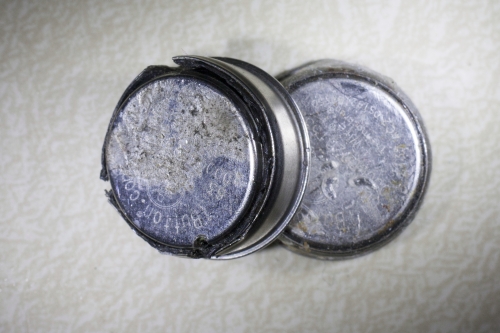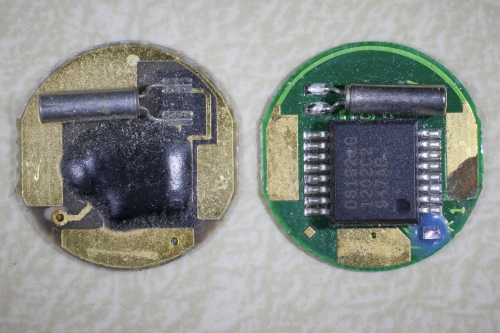I’ve written in the past about iButtons and my attempts to waterproof them. Although iButton temperature dataloggers are fairly well sealed, they are not waterproof. But if you know an old person that used iButtons in the late 90s or early 2000s, they might claim that iButtons are absolutely waterproof.
It turns out that iButtons are one of those rare things in life that really were better when you were a kid. In the old days they could be put out in the ocean for weeks or months, completely bare, and most of them would survive just fine (I’m speaking of iButtons, not children in this case). But some time in the early 2000s, Dallas Semiconductor, the company that originally developed the iButton, redesigned the classic DS1921 ibutton to use a new chip inside that was probably cheaper to manufacture. After that redesign, suddenly the failure rate on iButtons placed in submerged conditions jumped, and users had to come to terms with a new, worse future. To be fair, the manufacturer never claimed that iButtons were waterproof, only specifying a IP56 rating which is capable of withstanding a bit of water spray. A “waterproof” design would be rated IP68 ideally.

If you cut the casing on an iButton and split the two halves, two things happen. 1st, you lose all your data when the internal battery loses contact with the chip inside. 2nd, you get to see the chip and battery, and their plastic casing.

In the image above, you see the black plastic ring and battery on the left half of the casing. On the right side you see the DS1924G integrated circuit, along with a what is most likely a 32.768kHz crystal oscillator to run the internal clock, much like a wristwatch uses. The three large copper pads around the chip contact tabs on the battery when the case halves are pressed together.
As I said, the 16-pin integrated circuit, marked DS19284G, is a new version of the original iButton chip found in the DS1921 model. In the image below, on the left I have an iButton from the early 2000’s, one of the original “waterproof” DS1921 iButtons. You can see they both have the 32.768kHz crystal, but the old iButton had a smaller chip hidden under a blob of epoxy. The two versions function pretty much identically, but it seems that during the change to the new chip style on the right, the structure of the iButton case, or at least of the black plastic ring that serves to separate the two halves of the case and provides the environmental seal, changed enough that water can now slowly wick in between the seam of the case halves.

As a result, all iButtons need to be waterproofed somehow if you’re going to deploy them underwater or even in moist soil conditions. Maxim, the company that bought Dallas Semiconductor, offers waterproof cases that can hold an iButton, or you can use any number of hardware store solutions including wax, Plastidip rubber coating, latex gloves, condoms, polyester resin or a good coating of nail polish to provide a seal.
Incidentally, if you do have iButtons that have died for unknown reasons, it may be worth cutting them open to get at the chip inside. If the battery has simply died, rather than water corroding the insides, you can repower the chip using a new battery attached to the copper pads, and you can still talk to it by touching the ground (negative) terminal of the battery and the copper backside of the circuit board with leads from your iButton USB adapter. The original battery is a 3volt lithium BR1225 battery, so any 3volt battery should work fine. I think the earliest paper describing this maneuver is from Robert and Thompson, 2003, Herpetological Review v34 n2, pg 130-132. The copper pads on the left and right of the modern DS1924G 16-pin chip are the positive terminals, and the copper pad at the bottom of the chip, opposite the 32.768kHz crystal, is the ground (negative) terminal.